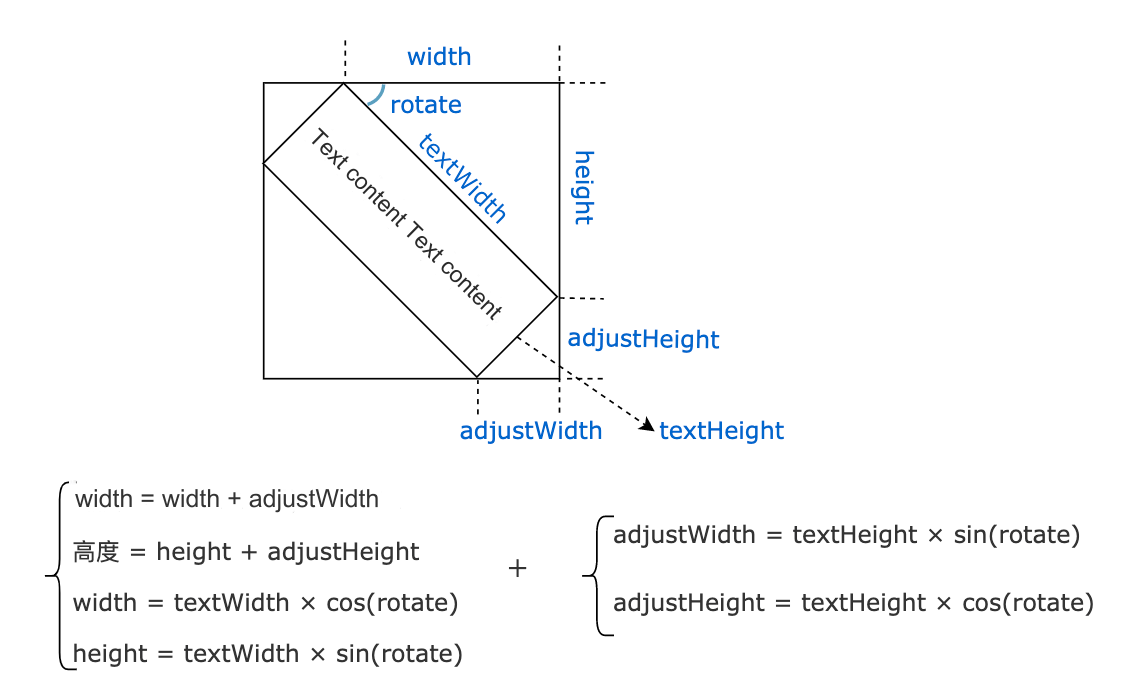In C++ programming, string manipulation is an inevitable part of the process. From simple string concatenation to complex text processing, C++'s
stringclass offers developers a more efficient, flexible, and safe way to manage and manipulate strings. This article will start with basic operations, gradually unveiling the secrets of C++'sstringclass, helping you understand its internal mechanisms, and learn how to leverage its performance and advantages in real-world development.
1. Why Learn C++'s String Class?
1.1 Strings in C
In C, strings are character arrays terminated by '�' and need to be manipulated using standard library functions like strcpy, strlen, and others. However, string manipulation in C has some significant drawbacks:
Manual memory management: Programmers must manually manage the memory for strings, which can lead to memory leaks or array overflow issues.
Complex operations: Operations like concatenation, searching, and copying require calling different functions, making it easy to make mistakes.
Not object-oriented: In C, string operations are separate from the data itself, which doesn’t align with modern Object-Oriented Programming (OOP) principles.
These limitations often lead to complex code and potential errors when dealing with strings. To improve code readability and maintainability, C++ introduced the string class to overcome these shortcomings.
1.2 Advantages of C++'s String Class
The C++ Standard Library provides the string class, which is part of the Standard Template Library (STL) and designed specifically to address the limitations of string handling in C. Here are the key advantages of the string class:
Automatic memory management: The
stringclass implements dynamic memory management internally, so users don't need to manually allocate or free memory.Rich interface: It provides functions for string searching, concatenation, replacement, insertion, and more, greatly improving development efficiency.
Good compatibility: It supports interoperability between C-style strings and C++ strings.
Object-oriented: The operations and data are encapsulated together, making the code more concise and modular.
1.3 Practical Significance and Use Cases
In everyday development, most of the time, we choose to use the string class over C-style strings. The automatic memory management and built-in function capabilities make coding simpler and more efficient, especially when performing string concatenation, searching, or other complex operations. The string class is also commonly encountered in problems on major online coding platforms, so mastering its use is crucial for improving code efficiency and reducing error risks.
2. The string Class in the Standard Library
2.1 Creating and Initializing Strings
In C++, the string class supports various ways of constructing and initializing strings. Below are some common construction methods:
#include <iostream>
#include <string>
using namespace std;
int main() {
string s1; // Empty string
string s2("Hello, World"); // Initialize with a C-style string
string s3(s2); // Copy constructor
string s4(5, 'A'); // Contains 5 characters 'A'
cout << s1 << endl; // Empty
cout << s2 << endl; // Hello, World
cout << s3 << endl; // Hello, World
cout << s4 << endl; // AAAAA
return 0;
}2.1.1 Constructor Summary
| Constructor Type | Example | Description |
|---|---|---|
| Default constructor | string s1; | Creates an empty string |
| Constructed from C-style string | string s2("Hello"); | Constructed from a C string |
| Copy constructor | string s3(s2); | Constructed from another string object |
| Constructed with repeated characters | string s4(5, 'A'); | Contains 5 characters 'A' |
2.2 Accessing and Traversing Strings
C++'s string class supports multiple ways to traverse and access characters. Here are some common methods:
2.2.1 Using the Subscript Operator []
Access characters directly by index:
#include <iostream>
#include <string>
using namespace std;
int main() {
string str = "Hello";
for (size_t i = 0; i < str.size(); ++i) {
cout << str[i] << " ";
}
return 0;
}2.2.2 Using Range-based for Loops (C++11)
Range-based for loops simplify code, especially when dealing with container types:
#include <iostream>
#include <string>
using namespace std;
int main() {
string str = "Hello, World";
for (char ch : str) {
cout << ch << " ";
}
return 0;
}2.2.3 Using Iterators
Iterators offer a more flexible way to traverse strings, including both forward and backward traversal:
#include <iostream>
#include <string>
using namespace std;
int main() {
string str = "Hello";
// Forward traversal
for (auto it = str.begin(); it != str.end(); ++it) {
cout << *it << " ";
}
cout << endl;
// Backward traversal
for (auto rit = str.rbegin(); rit != str.rend(); ++rit) {
cout << *rit << " ";
}
return 0;
}2.2.4 Comparing Traversal Methods
| Traversal Method | Advantages | Disadvantages |
|---|---|---|
| Subscript access | Simple and intuitive | Cannot handle complex types |
| Range-based for loop | Concise and safe, avoids out-of-bounds | Cannot get the index |
| Iterator | Flexible, versatile | Slightly more complex to use |
2.3 Common String Operations and Methods
2.3.1 Modifying String Content
Methods like push_back, append, insert, erase, and replace allow modifying a string:
#include <iostream>
#include <string>
using namespace std;
int main() {
string str = "Hello";
str.push_back('!');
cout << str << endl; // Hello!
str.append(" World");
cout << str << endl; // Hello! World
str.insert(5, " dear");
cout << str << endl; // Hello dear! World
str.erase(5, 5);
cout << str << endl; // Hello! World
str.replace(6, 5, "C++");
cout << str << endl; // Hello! C++
return 0;
}2.3.2 Finding and Extracting Substrings
Methods like find, rfind, and substr are used for substring searching and extraction:
#include <iostream>
#include <string>
using namespace std;
int main() {
string str = "Hello, World!";
size_t pos = str.find("World");
if (pos != string::npos) {
cout << "Found 'World' at position: " << pos << endl;
}
string sub = str.substr(7, 5);
cout << "Substring: " << sub << endl;
return 0;
}2.4 String Capacity Management
The string class supports dynamic expansion, with underlying heap memory management. Below are some common capacity management methods:
size(): Returns the number of characters in the string.capacity(): Returns the current allocated capacity.reserve(): Reserves memory space.resize(): Adjusts the string length.
#include <iostream>
#include <string>
using namespace std;
int main() {
string str = "Hello";
cout << "Size: " << str.size() << endl; // 5
cout << "Capacity: " << str.capacity() << endl;
str.reserve(50);
cout << "After reserve, Capacity: " << str.capacity() << endl;
str.resize(10, '!');
cout << "After resize: " << str << endl; // Hello!!!!!
return 0;
}2.4.1 Points to Note
size()andlength()are identical; it's generally recommended to usesize()to align with other container interfaces.clear()clears the valid characters but does not change the underlying space.resize()will use default characters to fill in when increasing the character count; when decreasing, the underlying capacity remains unchanged.
3. In-Depth Understanding: Implementation Mechanism of the string Class
3.1 Shallow Copy vs Deep Copy
The difference between shallow copy and deep copy lies in whether the memory is independently managed. If an object contains pointer members, a shallow copy only copies the pointer values, which may result in multiple objects sharing the same memory. On the other hand, a deep copy copies the data pointed to by the pointers.
Example of a shallow copy:
class String {
private:
char* _str;
public:
String(const char* str = "") {
_str = new char[strlen(str) + 1];
strcpy(_str, str);
}
// Copy constructor (Deep copy)
String(const String& s) {
_str = new char[strlen(s._str) + 1];
strcpy(_str, s._str);
}
~String() {
delete[] _str;
}
};3.2 Copy-On-Write (COW)
Copy-On-Write reduces unnecessary memory allocation overhead through reference counting.
3.2.1 Core Mechanism of Copy-On-Write
Copy-On-Write (COW) is an optimization technique used in some standard library implementations before C++11, where the string class used COW to minimize unnecessary memory allocations. When multiple string objects share the same data, deep copy is only performed when one of the objects needs to modify the data.
Implementation of Copy-On-Write The core of COW is reference counting. It keeps track of how many objects are sharing the same memory. When an object needs to modify the data, the reference count is checked:
Reference count is 1: The current object is the only owner and can modify the data directly.
Reference count is greater than 1: The memory is shared by multiple objects, and deep copy must be performed.
Here is an example of COW:
#include <iostream>
#include <cstring>
using namespace std;
class String {
private:
char* _data;
int* _refCount; // Reference counter
void detach() {
if (*_refCount > 1) {
--(*_refCount); // Decrease reference count
_data = strdup(_data); // Create a new copy
_refCount = new int(1); // Initialize new counter
}
}
public:
String(const char* str = "")
: _data(strdup(str)), _refCount(new int(1)) {}
String(const String& s)
: _data(s._data), _refCount(s._refCount) {
++(*_refCount); // Increase reference count
}
~String() {
if (--(*_refCount) == 0) {
delete[] _data; // Free memory
delete _refCount; // Free counter
}
}
String& operator=(const String& s) {
if (this != &s) { // Avoid self-assignment
if (--(*_refCount) == 0) { // Free current resources
delete[] _data;
delete _refCount;
}
_data = s._data; // Share resources
_refCount = s._refCount;
++(*_refCount); // Update reference count
}
return *this;
}
char& operator[](size_t index) {
detach(); // Check if separation is needed before modification
return _data[index];
}
const char* c_str() const { return _data; }
};
int main() {
String s1("Hello");
String s2 = s1; // Share memory
cout << s1.c_str() << " " << s2.c_str() << endl; // Output the same content
s2[0] = 'h'; // Perform deep copy, modify s2 content
cout << s1.c_str() << " " << s2.c_str() << endl; // Output different content
return 0;
}Output:
Hello Hello Hello hello
Advantages and Disadvantages of Copy-On-Write
Advantages:
Avoids frequent deep copy operations, improving performance.
Very efficient in read-only scenarios.
Disadvantages:
Increases the complexity of implementation.
In a multithreaded environment, a locking mechanism for the reference counter is required, which may lead to performance bottlenecks.
In modern C++ (from C++11 onwards), Copy-On-Write has been deprecated in favor of more efficient move semantics and standard memory management.
3.3 Small String Optimization (SSO)
In modern C++ implementations, the string class typically uses Small String Optimization (SSO). When the string length is short, it uses fixed space on the stack to store data instead of dynamically allocating memory on the heap. SSO significantly improves the efficiency of operations on short strings.
3.3.1 Advantages of Small String Optimization
Avoids frequent dynamic memory allocations: Stack memory allocation is more efficient than heap memory.
Reduces heap memory fragmentation: For short strings, the use of heap memory is minimized.
Increases access speed for short strings: Using fixed space on the stack improves access speed.
Example:
Modern string implementations typically reserve a buffer of a certain size (e.g., 16 bytes). As long as the string length does not exceed this buffer, the string data will be stored directly on the stack. This approach greatly improves execution efficiency, especially when handling large numbers of short strings.
3.4 Move Semantics
C++11 introduced move semantics to avoid unnecessary deep copying. In modern implementations of string, when data is moved from one string object to another, only the memory pointer is moved, instead of copying the entire content of the string.
Example:
#include <iostream>
#include <string>
using namespace std;
int main() {
string s1 = "Hello, World!";
string s2 = std::move(s1);
cout << "s2: " << s2 << endl; // Output: Hello, World!
cout << "s1: " << s1 << endl; // Output: Empty string
return 0;
}With move semantics, "Hello, World!" is not copied, thus improving program efficiency. The data of s1 is "moved" to s2, and s1 becomes an empty string.
4. Custom string Class Implementation
Implementing a fully functional string class can help understand its underlying mechanisms. Below is a simplified version of a String class that includes constructors, copy constructor, assignment operator overload, destructor, and common string operations.
4.1 Implementation Code
#include <iostream>
#include <cstring>
using namespace std;
class String {
private:
char* _data;
size_t _size;
public:
// Default constructor
String() : _data(new char[1]{ '�' }), _size(0) {}
// Parameterized constructor
String(const char* str)
: _data(new char[strlen(str) + 1]), _size(strlen(str)) {
strcpy(_data, str);
}
// Copy constructor
String(const String& s)
: _data(new char[s._size + 1]), _size(s._size) {
strcpy(_data, s._data);
}
// Assignment operator overload
String& operator=(const String& s) {
if (this != &s) {
delete[] _data;
_size = s._size;
_data = new char[s._size + 1];
strcpy(_data, s._data);
}
return *this;
}
// Destructor
~String() {
delete[] _data;
}
// Get the string size
size_t size() const { return _size; }
// Access characters
char& operator[](size_t index) { return _data[index]; }
const char& operator[](size_t index) const { return _data[index]; }
// Concatenate strings
String& operator+=(const char* str) {
size_t newSize = _size + strlen(str);
char* newData = new char[newSize + 1];
strcpy(newData, _data);
strcat(newData, str);
delete[] _data;
_data = newData;
_size = newSize;
return *this;
}
// Output operator overload
friend ostream& operator<<(ostream& os, const String& s) {
os << s._data;
return os;
}
};4.2 Test Code
int main() {
String s1("Hello");
String s2 = s1; // Use copy constructor
String s3;
s3 = s1; // Use assignment operator
cout << "s1: " << s1 << endl;
cout << "s2: " << s2 << endl;
cout << "s3: " << s3 << endl;
s1 += ", World!";
cout << "After concatenation: " << s1 << endl;
return 0;
}Output:
s1: Hello s2: Hello s3: Hello After concatenation: Hello, World!
4.3 Further Understanding of Modern C++ String Optimizations
Small String Optimization (SSO)
When the length of a string is short, the string class avoids dynamic memory allocation on the heap by using a fixed-size buffer on the stack to store data. This optimization improves the efficiency of short strings and is widely implemented in the standard libraries of modern compilers.
Application of Move Semantics
Move semantics avoids the performance overhead caused by deep copying. Especially for long strings, moving pointers instead of copying all characters significantly improves program execution efficiency.
5. Summary and Practice
In this article, we have provided a detailed analysis of the string class in C++, covering its functionality, implementation mechanisms, and optimization strategies from basic to advanced levels. The key points include:
Basic Usage: Common operations such as construction, traversal, and modification.
Internal Mechanisms: Deep copy, shallow copy, and Copy-On-Write.
Modern Optimizations: Small String Optimization and move semantics.
Study Suggestions:
Understand the underlying implementation principles: Study the simulated implementation of the
stringclass to understand dynamic memory management, reference counting, and deep copy mechanisms behind it.Practice in real-world projects: Use the
stringclass extensively in actual development to master its efficient built-in interfaces.
We hope this detailed analysis helps you fully understand the string class in C++ and makes it a powerful tool in your development endeavors!







